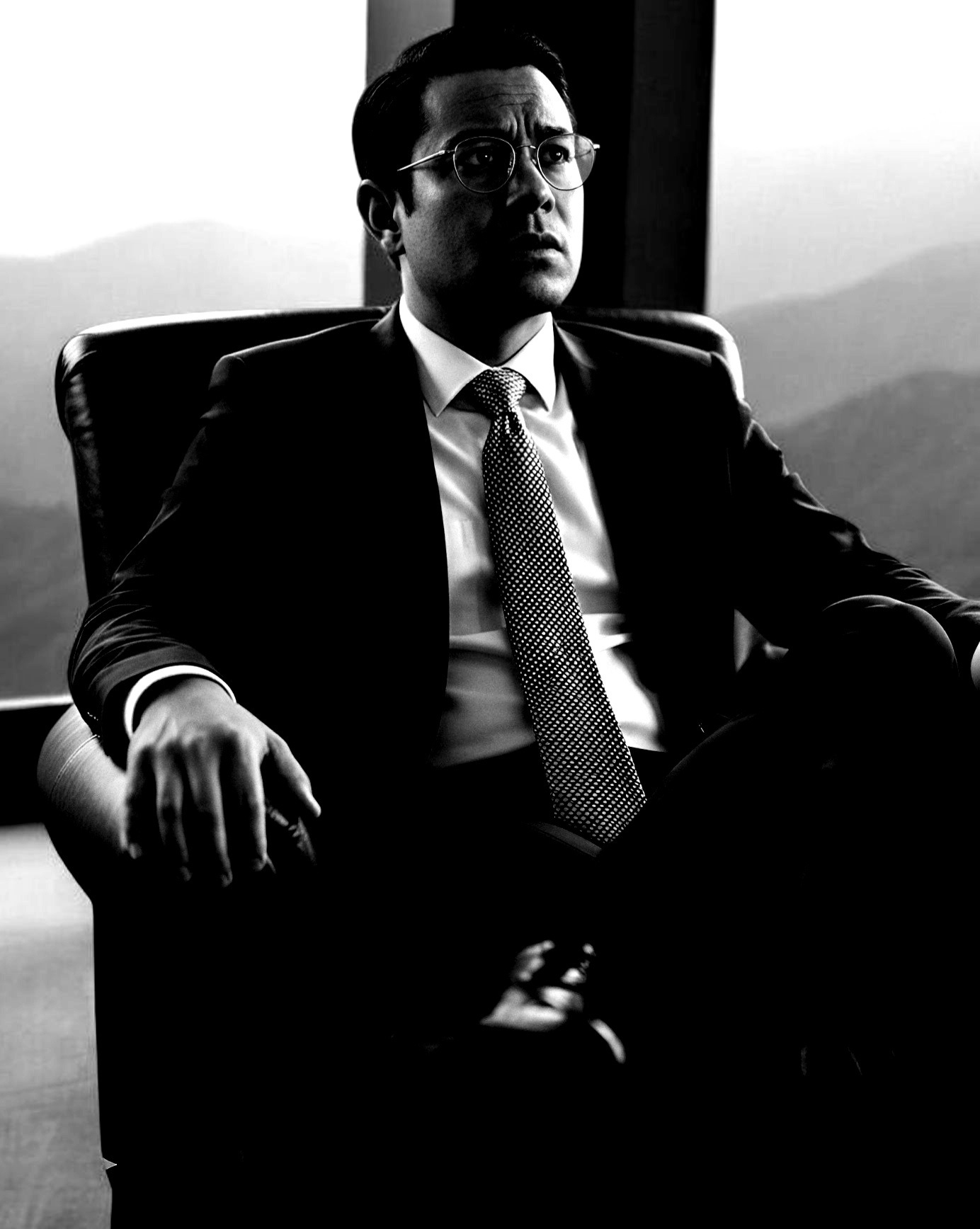
Special Feature
We examine issues affecting leadership
The Human Edge: Why Empathy Is Redefining What It Means to Lead
special feature
BY LAURIE HUFFMAN
I. The Quiet Shift Beneath Power
In boardrooms, start-up huddles, and global strategy calls, something beneath the surface of business is changing. The language of leadership — once dominated by efficiency, velocity, and performance — is softening. Not in weakness, but in wisdom. We are living through what psychologists call an empathy correction: a cultural recalibration toward care, connection, and consciousness in how we lead. The old archetype of the leader as commander — detached, analytical, self-contained — is quietly giving way to a new one: the leader as listener, integrator, and meaning-maker. Ten years ago, empathy was the footnote in leadership competency models — the “soft skill” slotted after innovation and strategy. Today, according to a 2025 Harvard Business Review meta-analysis, empathy ranks among the top three predictors of leadership effectiveness across industries. Companies led by empathetic executives reported a 56% higher engagement rate, 40% lower turnover, and measurable gains in customer trust. But what’s more interesting than the data is the psychology behind it. This isn’t about trend language or moral posturing. It’s about survival — emotional and organizational. When uncertainty is constant and the social fabric of work is stretched thin, people don’t follow certainty; they follow sincerity. And sincerity starts where leadership once ended — in vulnerability.
II. When Empathy Turns Inward
Empathy, at its most radical, begins not with others but with the self. Many executives who now champion empathy privately admit that learning to feel again was far harder than learning to lead. After years of equating composure with competence, they found themselves in emotional illiteracy — unable to name what they felt, only what they feared: losing control, losing face, losing pace. The first work of empathetic leadership is not emotional generosity; it is emotional honesty. Dr. Susan David, psychologist at Harvard Medical School, writes that “emotional agility — the ability to be with your emotions with curiosity, not judgment — is the foundation of meaningful leadership.” Empathy is what allows that curiosity to extend outward: from “What am I feeling?” to “What might they be feeling?”
It’s a mirror that reveals identity as much as it bridges understanding. Consider this: when leaders suppress their own emotional truth in the name of professionalism, they unconsciously signal to their teams that emotions are interference — rather than information. Over time, that emotional inhibition becomes cultural. Meetings grow quieter. Innovation slows. People disengage not from the mission, but from meaning itself. Empathy reopens that channel. It turns attention into attunement — the subtle shift from “I see you” to “I sense you.” And in that subtle shift, organizations become human again.

The next evolution of leadership is not about control. It’s about connection.
III. The Listening Leaders
Maya, a composite of several executives I interviewed, runs a fast-scaling tech company. She built her career on decisiveness — quick pivots, clear metrics, relentless drive. But after losing half her senior developers in one quarter, she began to ask harder questions. “I realized,” she told me, “that I was managing efficiency, not energy. Listening to progress reports, not to people.” So she started something deceptively simple: five-minute “temperature checks” at the start of meetings. One word each. No fixing, no follow-ups, just noticing. At first, the responses were superficial: “Good.” “Busy.” “Fine.” But within weeks, vulnerability began to ripple through the room. “Tired.” “Stretched.” “Hopeful.” “Disappointed.” It wasn’t therapy — it was truth. And truth, it turns out, is an untapped productivity tool. Patterns emerged that no spreadsheet could reveal: the quiet exhaustion after a product sprint, the hidden friction between departments, the silent pride of a team that pulled off the impossible. The meetings didn’t get shorter. But they got realer. And the team began performing at a level that came not from pressure, but from coherence. As one developer said, “It’s the first time I feel like my humanity isn’t a distraction from my work.”
IV. The Hidden Cost of Emotional Distance
Empathy is often misunderstood as comfort. In truth, it is confrontation — with complexity, contradiction, and one’s own limitations. The opposite of empathy isn’t cruelty. It’s distance. Distance is what allows a manager to ignore a team member’s burnout because “we all have to push through.” It’s what enables brilliant founders to lose emotional touch with their people even as they expand their mission to “make the world better.” Distance protects the ego but corrodes the collective. One healthcare executive, whom we’ll call Rafael, discovered this the hard way. During the pandemic, his hospital’s workforce faced immense trauma — patient loss, overwork, grief that had no outlet. Yet Rafael, trained in stoicism, believed his job was to “keep morale up” and “stay strong.” It wasn’t until a nurse broke down in a staff meeting that something cracked open. “We don’t need you to be strong,” she said through tears. “We need you to be real.” That moment changed his entire philosophy. “I thought empathy meant showing compassion after the crisis,” he later reflected. “Now I see it means feeling the crisis with them, without losing my center.”The following year, Rafael introduced reflective rounds — short, facilitated sessions for staff to process emotional impact. Turnover dropped by 30%. But more importantly, morale became meaning again.
“Distance protects the ego but corrodes the collective.”
V. The Science of Soft Power
Neuroscience helps us understand why empathy feels both magnetic and draining. Mirror neurons fire when we witness another’s emotion, creating a physiological echo in our brain. This is why empathy feels embodied — it’s literally felt inside us. But there’s a catch: prolonged exposure without emotional regulation leads to empathy fatigue. Dr. Tania Singer, a social neuroscientist, differentiates between emotional empathy (feeling others’ emotions) and cognitive empathy (understanding them). The key, she argues, is compassion training: cultivating care without overidentification. In leadership, this translates to emotional regulation — the art of being open without being overwhelmed. When leaders can stay attuned but centered, they model what psychologists call secure empathy: connection without collapse. It’s what makes people feel safe enough to be honest, but not dependent. This is why the best leaders don’t just absorb emotion; they metabolize it. They transform it into clarity, context, and calm. Soft power, then, is not about gentleness. It’s about emotional agility — the ability to hold complexity without forcing closure.
VI. The Moral Recalibration
Empathy changes not only how leaders act, but how they decide. Traditional ethics in leadership have centered on rational fairness — the duty to do what’s just. Empathy adds another dimension: the responsibility to imagine. When a leader takes time to feel how a decision lands on those it affects, strategy becomes stewardship. It moves from efficiency to equity. Philosopher Martha Nussbaum calls this “the moral imagination” — the capacity to extend our emotional world to include others. It’s what allows a policy to evolve from abstract principle to lived compassion. Empathetic decision-making doesn’t mean sentiment replaces structure. It means data is interpreted through dignity. In 2024, McKinsey reported that organizations practicing empathy-informed design in leadership decision-making saw double the employee advocacy scores compared to industry averages. Employees didn’t just feel “managed” — they felt seen. Empathy, then, is not an HR strategy. It’s a moral stance.
VII. When Empathy Meets Ambition
The tension between empathy and ambition is one of leadership’s oldest paradoxes. Founders often ask, “Can I lead with empathy and still drive aggressive goals?” The answer is yes — but it requires redefining ambition itself. Empathy doesn’t blunt ambition; it purifies it. It turns drive into devotion — from “how fast can we win?” to “how deeply can we align?” One founder I spoke with, Elena, learned this during a painful downsizing. Her instinct was to protect the company at all costs — until she realized that “protecting the company” meant protecting its soul, not just its balance sheet. So instead of sending impersonal layoff emails, she hosted small circles with transparency about the situation, listened to employees’ fears, and even connected some with recruiters in her own network. The aftermath? Her company’s Glassdoor ratings rose. Departing employees became advocates, not critics. Empathy didn’t save every job — but it saved the culture. Ambition with empathy becomes sustainable ambition — the kind that outlasts hype cycles and burnout waves.

Leadership isn’t only about achieving results. It’s about inspiring, elevating, and sustaining the people behind them.
VIII. Empathy as Organizational Intelligence
Empathy, scaled, becomes system intelligence. Companies are beginning to treat empathy not as a trait but as infrastructure. They’re embedding it into processes, from onboarding to performance reviews. Some conduct empathy mapping during strategy sessions — not just who will buy, but how people will feel during an experience. At Microsoft, empathy is now a leadership KPI. At Cisco, “conscious culture” programs train managers to identify emotional patterns in team behavior.These aren’t fringe experiments — they’re responses to a workforce that measures worth by belonging as much as by compensation. According to Deloitte’s 2025 Human Capital Trends report, “Empathy is now a business currency. Its absence costs organizations more than disengagement — it costs coherence.” Empathy builds coherence: the emotional consistency between what a company says and how it feels to work there. That coherence is the new trust. And trust, as every market knows, compounds.
IX. The Inner Architecture of Empathy
Empathy reshapes not only organizations but the inner scaffolding of the leader. Psychologically, it widens the aperture of perception. Leaders start noticing subtleties — tone, tension, timing — that others miss. They begin leading from curiosity rather than certainty. But there’s something even deeper: empathy restores meaning. In high-performance cultures, burnout isn’t just exhaustion; it’s existential emptiness. Empathy reconnects leaders to purpose by re-humanizing the process. It transforms leadership from a performance of control to a practice of connection. Empathy is the pause between reaction and response — the breath that restores awareness. It’s the space where presence becomes power. And presence, as the CammaneX ethos reminds us, is where empathy and power meet.
X. The Philosophy of Soft Leadership
To lead softly is not to be mild. It’s to be mindful. Soft leadership is grounded in the paradox that sensitivity is a form of strength. It requires emotional granularity — the ability to name and navigate feelings without being ruled by them. The soft leader listens to the system as a living organism — noticing what is unsaid, unseen, unmeasured. They ask questions not to control but to connect. As philosopher Alain de Botton writes, “Maturity is the capacity to live with the ambivalence of others’ emotions without panicking.” Soft leadership is that maturity scaled. It is the art of holding complexity without collapse — of staying open without losing form. And in a world that prizes optimization over observation, that is radical.
“The first work of empathetic leadership is not emotional generosity; it is emotional honesty.”
XI. The Human Edge
If AI is redefining intelligence, empathy is redefining wisdom. Machines can detect emotion but cannot be moved by it. They can calculate preference but not meaning. What remains distinctively human is the capacity to feel ethically — to let emotion refine judgment rather than distort it. That is the human edge. It’s not just about understanding others, but about becoming more whole ourselves. Empathy is evolution — the next stage of intelligence, integrating reason with resonance. Leadership, then, is not the management of people. It is the stewardship of shared humanity. Empathy doesn’t make leadership easier. It makes it truer. Because in the end, every business is a story of people trying to make sense together. And the leaders who will endure are those who know that behind every strategy is a soul, behind every decision a heartbeat, behind every success a moment of being seen. The future belongs to those who lead softly — who know that power without empathy is noise, and empathy without action is sentiment, but together, they are wisdom in motion.
